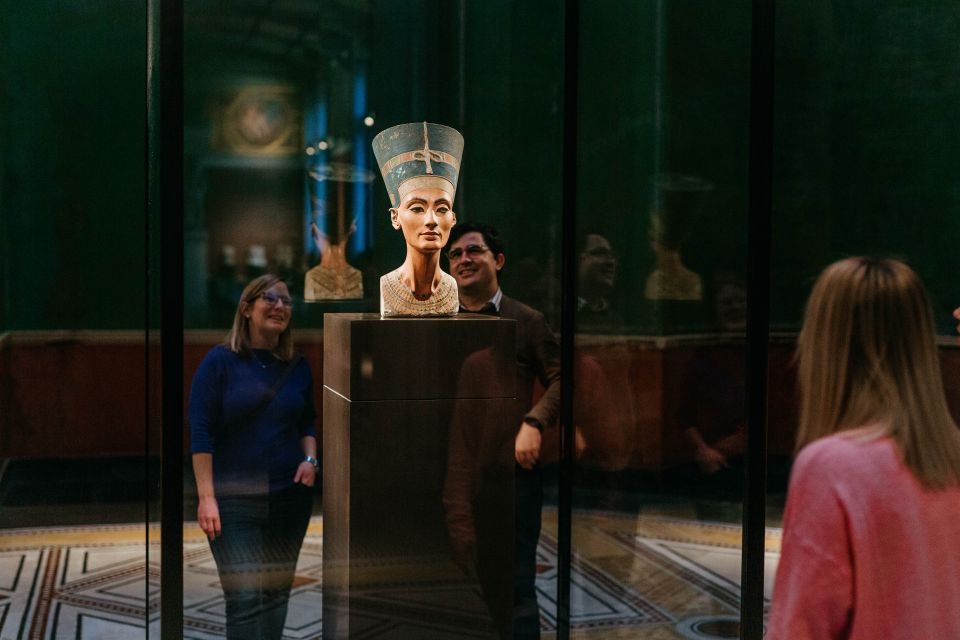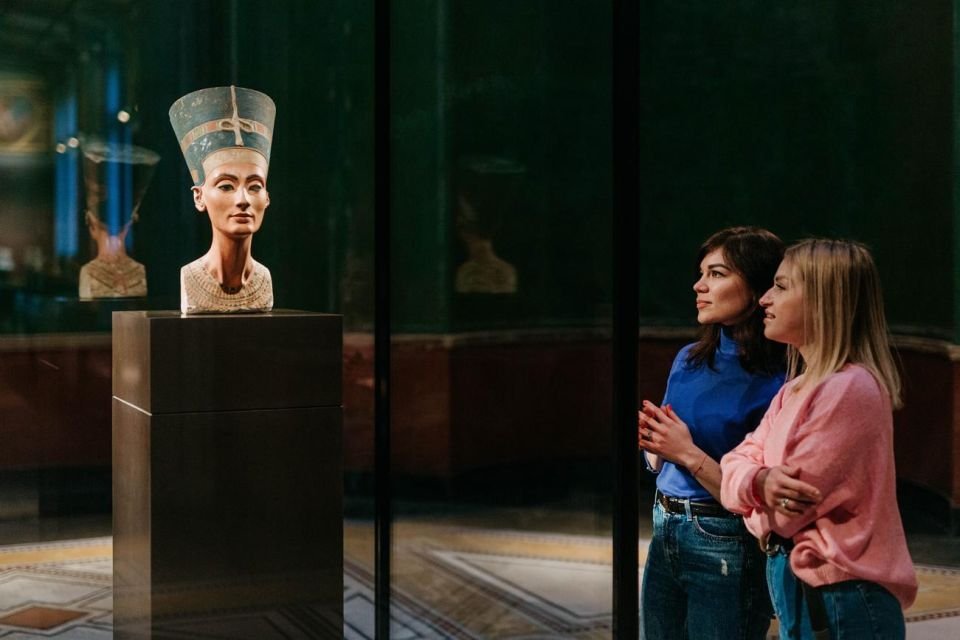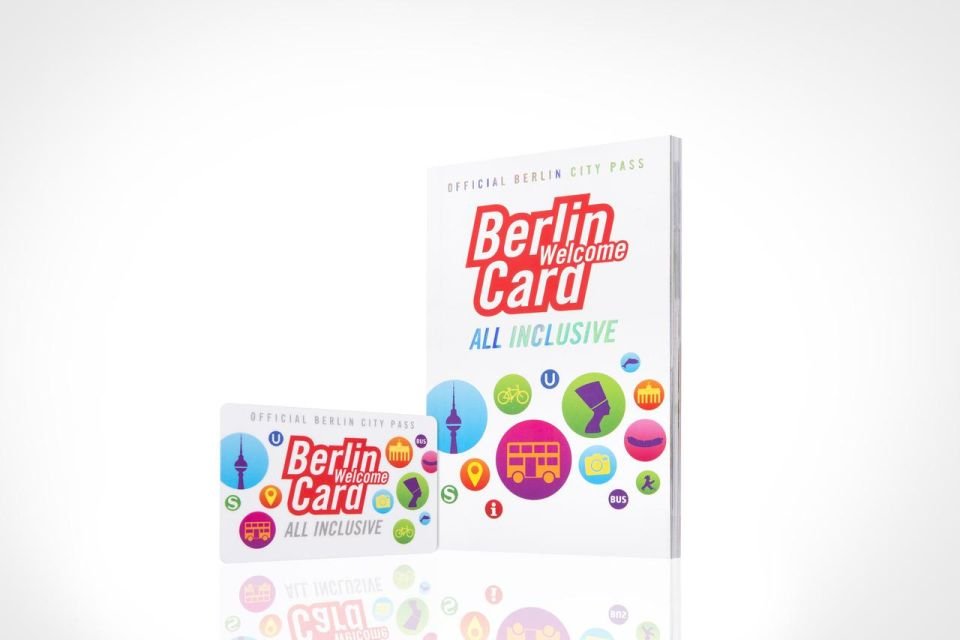NEUES MUSEUM BERLIN
Find here important information to plan your visit, including the historical and architectural side, collection and opening hours.
HISTORY / ARCHITECTURE
The Historical Journey of the Neues Museum Berlin
The Neues Museum (New Museum) was constructed in Berlin between 1843 and 1855 by the classical architect Friedrich August Stuler. The building suffered severe damage during World War II but was restored by David Chipperfield between 1999 and 2009. It now stands on Museum Island as a blend of classicism and modernity, representing one of the most important 19th-century structures in Germany.
The Neues Museum on Berlin's Museum Island houses two significant collections, allowing us to explore art pieces from prehistory to early history. With a comprehensive focus on the cultural history of Egyptians, the museum's most magnificent highlight is undoubtedly the solitary display of Nefertiti in a spacious room.
Nefertiti, often considered the world's most beautiful woman, is showcased in a special octagonal room beneath the northern dome of the museum.
The Neues Museum Berlin Building's Architectural Side
The Neues Museum, located in the Museum Island of Berlin, was the first museum with three exhibition levels on both sides of the monumental staircase. The building was connected to the Altes Museum by a bridge.
During World War II, some parts of the museum suffered severe damage and were destroyed. Consequently, in 1985, it was decided to reconstruct the museum.
Between 2003 and 2009, the museum was rebuilt according to the plans of the British architect David Chipperfield. The original structure of the building was preserved, and great care was taken to harmonize it with the old. The Neues Museum was completed in 2007 and opened to visitors in 2009 in the Museum Island.
After its opening, the Neues Museum received numerous awards and recognitions.
The Neues Museum's Collections (Permanent Exhibition)
The Neues Museum, located on Museum Island in Berlin, houses two collections in an exhibition area of 8,000 square meters. In general, the artifacts shed light on Ancient Egypt, Prehistory, and the Ancient Age. The first collection is the Egyptian Museum and Papyrus Collection, while the second one includes objects from the Ancient Artefacts Collection, Prehistory, and Early History Museum.
Under the title of 'Egyptian Museum', the Neues Museum displays artifacts belonging to the Ancient Egyptian period. In the exhibition area of Prehistory and the Ancient Age, you can find objects related to the history of the entire world.
Let's get to know these three collections more closely!
1. Egyptian Museum and Papyrus Collection:
This collection contains the world's most important
collection related to Egyptian culture. It allows us to have knowledge about everything that happened in Egyptian and Nubian cultures over the course of four thousand years. The prominent artifacts the Neues Museum include the bust of Queen Nefertiti (approximately 1251-1334 BC), known as the world's most beautiful woman, three newly restored sacrificial chambers from the Old Kingdom, and the Green Head (c. 500 BC) from the Amarna Collection.
The Egyptian journey in the Neues Museum concludes in the "Library of Antiquity" with selected texts and literary works from ancient Egypt to late antique written culture. The basement level features exhibits on daily life, the afterlife, and the culture of gods.
2. Prehistory and Early History Museum
This section is named "Objects from the Collection of Ancient Artifacts". In this section of the Neues Museum, on the ground floor, you can visit the "Odin, Urns, Looted Art" room, which features historical murals depicting Scandinavian mythology. On the first floor, it starts with the archaeology of Roman provinces and the portrayal of Rome's northern German neighbors; the second floor takes you back from Le Moustier to Neanderthal's skull, to the Stone Age, the mysterious "Berlin Gold Hat", and the complex culture of the pre-Roman Iron Age.
Highlights of the collection
- Stucco-coated limestone bust of Nefertiti
- The popular Berliner "Green Head"
- Bronze Age "Berlin Gold Hat"
- A 700,000-year-old axe head (in the Stone Age Exhibition Section)
- Valuable silver vessels from Priam's Treasure (discovered in ancient Troy by Heinrich Schliemann)
Neues Museum Berlin Tickets & Tours
Visit the Neues Museum and gaze in wonder at exhibits from the Egyptian Museum, the Antique Collection and the Museum of Prehistory and Early History.
€ 14.00
Discover Museum Island in Berlin with this ticket that is valid for one day in all houses of the Museum Island (Altes Museum, Neues Museum, Bodemuseum, Das Panorama, Alte Nationalgalerie).
€ 24.00
Enjoy free entry to the top attractions and discounts at restaurants with the Berlin WelcomeCard. Travel the city on a hop-on hop-off bus for free, and save up to half price on certain activities.
€ 95.00
€ 14.00
Plan Your Visit to the Neues Museum Berlin
Location
Bodestraße 1-3, 10178 Berlin
Getting to Neues Museum Berlin
- U-Bahn: Museum Island (Museumsinsel) (U5)
- S-Bahn: Friedrichstraße, Hackescher Markt
- Tram: Am Kupfergraben, Hackescher Markt
- Bus: State Opera, Lustgarten, Friedrichstraße
Opening Hours
- Mon closed
- Tue: 10:00 am - 06:00 pm
- Wed: 10:00 am - 06:00 pm
- Thu: 10:00 am - 08:00 pm
- Fri: 10:00 am - 06:00 pm
- Sa: 10:00 am - 06:00 pm
- Sun: 10:00 am - 06:00 pm
Things to Know Before Visiting the Neues Museum Berlin
Frequently Asked Questions About Neues Museum in Berlin
The average time needed to visit the Neues Museum is about 1.5-2 hours. Additionally, the recommended visiting time for a comfortable experience is 10:00 AM. >Information about the best time slots for Neues Museum
You can see the Nefertiti Bust at the Neues Museum's Egyptian Museum and Papyrus Collection section located in Museum Island. The Nefertiti Bust, the prized possession of the Neues Museum, is displayed in a spacious room all by itself.
Between 2003 and 2009, the Neues museum was rebuilt according to the plans of the British architect David Chipperfield. The original structure of the building was preserved, and great care was taken to harmonize it with the old. The Neues Museum was completed in 2007 and opened to visitors in 2009 in the Museum Island. >>Detailed information about Building's Architectural Side
The name of Nefertiti, exhibited in the Neues Museum on Museum Island in Berlin, has Egyptian origins, and its meaning is "the beautiful one has arrived".




